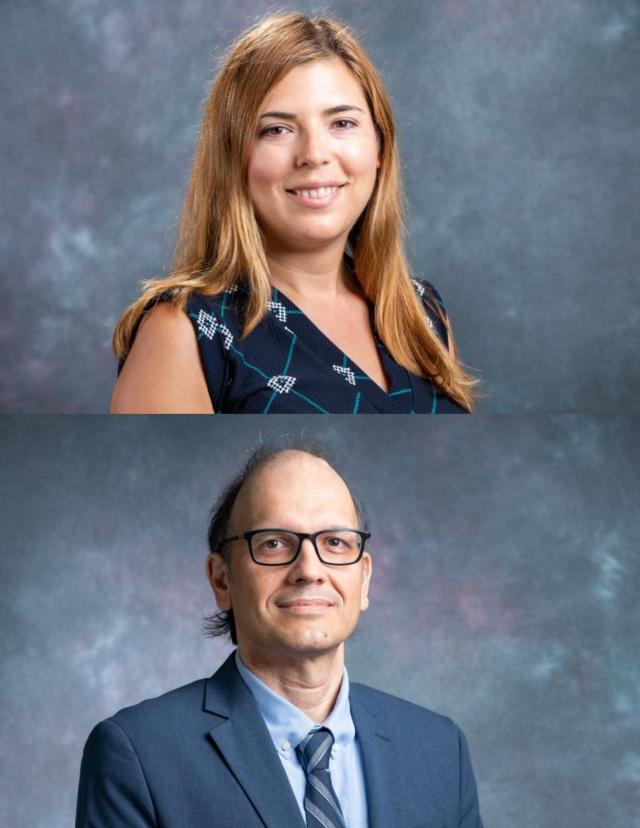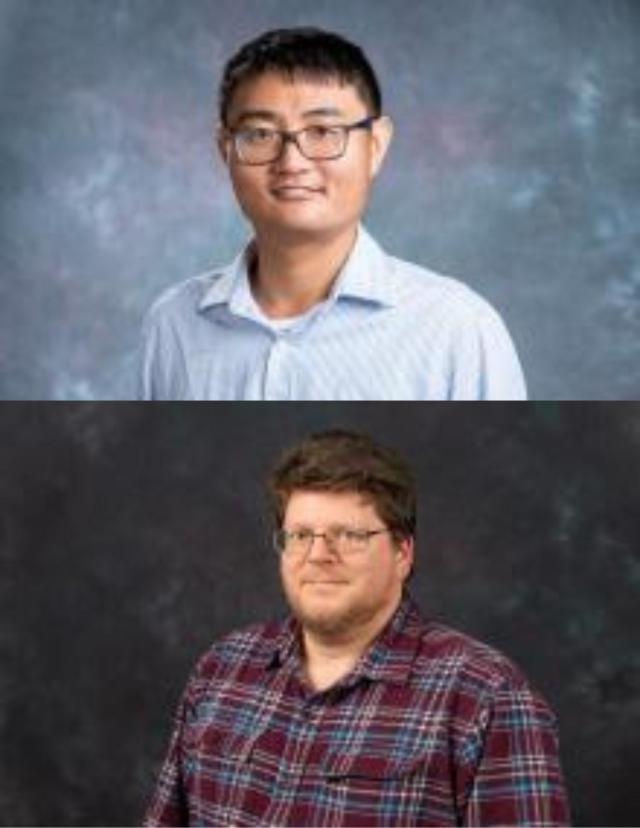National Science Foundation Build & Broaden Grant Award
The Center for Data Analytics and Visualization in Urban Research
DATA LITERACY ~ DEMOCRATIZATION OF DATA KNOWLEDGE ~ CROSS-DISCIPLINARY RESEARCH
Undergraduate Research Fellows
Student Opportunity: The Faculty Fellows affiliated with the Kean University Center for Data Analytics and Visualization in Urban Research seek undergraduate students in social science and urban studies related majors to work alongside Faculty Fellows engaged in cross-disciplinary research in social sciences using data analytics and visualization to advance research on urban studies.
Undergraduate Research Fellows will be paired with Faculty Fellows and Mentors to form interdisciplinary research teams conducting collaborative research for a one-year commitment. Undergraduate Research Fellows participate in the intellectual life of the Center and over the course of the summer, receive a stipend of $3,500 (8 weeks of work in support of research project, 30 hours/week, $15/hour). Students are supported and expected to present their contributions to the project at Kean University Research Days or similar event. They are also expected to attend the two data analytics and visualization workshops per semester during the academic year (AY). The Center for Undergraduate Research and Fellowships (CURF) from the Office of Research and Sponsored Programs (ORSP) will provide a $1,000 stipend for the Fall semester and the National Science Foundation, Build and Broaden Program will provide $1,000 for the Spring semester. The total stipend, including the AY and Summer will be $5,500. Undergraduate Research Fellows with the support of their Faculty Fellows and Mentors, may have the opportunity to present their work at regional or national conferences.
Project Overview: The purpose of this project is to build a scholarly community whereby faculty in the Social, Behavioral, and Economic Disciplines (SBE) and STEM disciplines at Kean University can leverage their discipline-specific knowledge and skill sets to engage in cross-disciplinary, collaborative, data-driven urban research through the following initiatives:
- To build an ecosystem whereby faculty in the Social, Behavioral, and Economic Disciplines (SBE) and STEM disciplines at Kean University can leverage their discipline-specific knowledge and skill sets to engage in cross-disciplinary, collaborative, data-driven urban research.
- To cultivate the Center of Data Analytics and Visualization in Urban Research to support urban research and examine the different possibilities for urban knowledge produced by Kean University scholars.
- To increase the number of undergraduate students conducting SBE urban research with data analytics and visualization.
- To build foundational concepts, including data literacy, democratization of data, knowledge, and cross-disciplinary collaborative research for faculty and students.
Principal Investigator: Julia Nevárez, Ph.D.
National Science Foundation / Build and Broaden 2023-2026
Terms of Undergraduate Research Fellowship
Application Link:
- Application opens on May 1st
- Application will close on June 15th
Eligibility Requirements:
-
Currently enrolled Sophomore or Junior at Kean University
-
A minimum GPA of 3.2 or above
-
Analytical and Evaluative skills
Duration of the Internship
- One year commitment starting Fall 2025
Irina Gioaba, Ph.D. & Nazif Durmaz, Ph.D.
Associate Professors
School of Management & Marketing, Global Business and Economics
Directory (Gioaba)
Directory (Durmaz)
Ageist Language in the Job Advertisements
Background and Motivation:
As the modern workplace is transforming and becoming increasingly older, an unprecedented trend has emerged:
for the first time in history, multiple generations co-exist and interact in the same workspace. While each generation faces their specific set of challenges, a workplace where the five generations simultaneously work together provides organizations a unique opportunity for diverse perspectives and approaches to work. Despite this promising outlook, bias and discrimination — against the older generations —is not an uncommon phenomenon. In fact, age discrimination is astonishingly prevalent, as illustrated by ample evidence spanning laboratory experiments, field studies, and workforce surveys. For instance, previous research showed that older workers systematically face more negative evaluations compared to younger workers at various stages during their work life including hiring, advancement, and general assessment. To a lesser, albeit not negligeable extent, young adults also face unfair treatment in the workplace.
Although today employers no longer post job ads reading blatant discriminatory messages such as “only workers under 35 need apply”, scholars warn that certain organizational practices may contribute to perpetuate age inequality in the workplace. One such example refers to the wording of job advertisements. In many states,
employers are no longer allowed to overtly advertise preference for certain groups, however they can nevertheless shape the applicant pool through subtle cues connoting certain group-associated traits and stereotypes. For example, empirical evidence supports these claims showing that job advertisements for male- dominated occupations use disproportionally greater masculine wording and across multiple occupations language related to ageist stereotypes has also been documented. Moreover, research shows that the stereotypical inferences drawn from the wording of job ads may dissuade minorities from applying. However, little is known about the frequency of ageist—both towards the old and the young— language on job seekers perceptions and intentions to apply.
Aim(s) and Research Questions:
To our knowledge, no existing study links gig work and social welfare participation among the working-age population. The proposed study will fill these gaps through the following three specific aims: (1) examining how federal welfare receipt and benefits differ for gig workers versus others; (2) examining how economic conditions shape the size of the gig workforce; and (3) exploring how the pandemic affects gig employment as well as the relationship between gig work and federal welfare receipt. The results of this study will help inform policy makers how future changes in the gig economy may affect social welfare. Findings will have important implications for the fiscal status of the social welfare system.
Hypothesis/Research Questions:
The goal of this research is to identify how an unacknowledged organizational practice—such as the use of ageist language in recruitment materials—may serve to reinforce the underrepresentation of older and young individuals in the workplace. Specifically, this research examines whether ageist wording (such as “technologically savvy”, “energetic”, “comfortable with change”, “experienced”, “etc.) emerge within job advertisements across occupations and industries and aims to examine its impact on prospective applicants.
Approach:
During July and August 2023, two Kean undergrads have collected 2,166 job descriptions spanning multiple industries and occupations. Using this data set, the goal is to collaborate with faculty and students in Computer Science to create a machine learning algorithm that can analyze the content and frequency of ageist language in job ads.
Selected Bibliography:
Burn, I., Firoozi, D., Ladd, D., & Neumark, D. (2021). Machine Learning and Perceived Age Stereotypes in Job Ads: Evidence from an Experiment (No. w28328). National Bureau of Economic Research.
Gaucher, D., Friesen, J., & Kay, A. C. (2011). Evidence that gendered wording in job advertisements exists and sustains gender inequality. Journal of personality and social psychology, 101(1), 109.
Neumark, D., Burn, I., & Button, P. (2019). Is it harder for older workers to find jobs? New and improved evidence from a field experiment. Journal of Political Economy, 127(2), 922-970.
Yu Sun Chung, Ph.D. & Daehan Kwak, Ph.D.
Assistant Professors
Pyschology & College of Science, Mathematics and Technology
Directory (Chung)
Directory (Kwak)
The Adolescent Neural Urbanome and Pubertal Development in the ABCD Study
Background and Motivation:
Climate change, pollution, urbanization, socioeconomic inequality, and psychosocial effects of the COVID-19 pandemic have caused massive changes in environmental conditions that affect youth’s brain development, both on a population level as well as on the level of the individual1. However, we know little about these environmental factors, particularly, urbanization influence puberty, brain, behavior, and mental illness. As recently reviewed1, population neuroscience using big data is a promising approach to identify brain mechanisms underlying environment-related mental illness for adolescents by leveraging innovative data analytic tools for data federation, climate and pollution measures, digital health, and novel data integration techniques. Thus, the purpose of this proposal is to determine a role of urbanization in adolescents’ pubertal development, brain and behavior using the largest scale neuroimaging datasets, the Adolescent Brain Cognitive Development SM Study (ABCD Study®)(Garavan et al., 2018, Jernigan et al., 2018). Recently, the ABCD Study expands researchers’ ability to explore how various environmental features of individuals’ residential locations – particularly in urban environments – relate to youth mental health and well-being outcomes2. Thus, this proposal will utilize mostly-released data set from the Adolescent Neural Urbanome in the ABCD Study that spans across the following 10 subdomains: 1) Composite Measures, 2) Urbanicity, 3) Neighborhood Social Factors, 4) Amenities and Services, 5) Natural Space and Satellite Measures, 6) Outdoor Air Pollution, 7) Weather and Exposures, 8) Community Health Burden, 9) Residential Segregation, and 10) Laws and Biases. Specific Aims are as follows.
Aim(s) and Research Questions:
Aim 1: To determine the impact of urbanicity on adolescents pubertal, brain, and cognitive development. Most evidence points to urban living as a risk factor for poorer mental health, yielding increased risk for psychosis, anxiety disorders and depression. Relatedly, early onset of puberty is one of well-known risk factors for female depression in adolescence. As children go through puberty, there are large sex differences in the prevalence of mental disorders such as depression, with females having greater vulnerability to males. Thus, I expect that urbanicity, as measured by existing ABCD study data set such as vehicle density, may lead to early onset of puberty and greater risk for adolescents’ mental health.
Aim 2: To determine a mechanistic relationship of urbanicity, socioeconomic inequality and mental health in
adolescence. Urban areas generally offer better access to educational, recreational, and health resources. However, disparities in access within urban areas due to low socioeconomic status, can lead to uneven mental health outcomes. Further, the socioeconomic inequality often lead to social exclusion and stigmatization, which are well-known risk factors for adolescents’ mental illnesses. Furthermore, adolescents living in urban areas often face higher levels of environmental stressors such as noise, pollution, and overcrowding. These stressors can contribute to increased anxiety and stress. Thus, this Aim will determine how urbanicity (e.g., residential segregation index from the ABCD study), especially youth at low SES may lead to increased risk for mental illness.
Approach:
The ABCD Study is already, IRB-approved study so, our team does not need to collect new data. Instead, our team will conduct secondary analyses using available data set from the expanded ABCD Study along with neuroimaging, pubertal hormones, and relevant behavior measurements – all of these variables are already included in the ABCD Study. As the ABCD Study includes approximately 10, 000 child brain, behavior, and clinical data, it is critical for our team to have programming skillsets and/or computer science background. Further, collaboration with experts in
statistics would be an asset for our team.
Selected Bibliography:
Cardenas-Iniguez C, Schachner JN, Ip KI, et al. Building towards an adolescent neural urbanome: Expanding environmental measures using linked external data (LED) in the ABCD study. Dev Cogn Neurosci. 2024;65:101338.
Schumann G, Andreassen OA, Banaschewski T, et al. Addressing Global Environmental Challenges to Mental Health Using Population Neuroscience: A Review. JAMA Psychiatry. 2023;80:1066-1074.
Jun Cheng, Ph.D. & David Joiner, Ph.D.
Assistant Professor & Associate Professor
Environmental and Sustainability Sciences & School of Integrative Science and Technology
Directory (Cheng)
Shoreline Morphodynamics in an Urbanized Setting in New Jersey: Surveying, Analytics,
and Mapping
Background and Motivation:
In densely populated areas of north/central New Jersey, overdevelopment in combination with rising sea levels and more intense storms have led communities to rely on installing hard structures and investing in beach nourishment as means to protect their shorelines. These activities influence coastal resiliency but also have great costs associated with them. To enhance shore protection and coastal sustainability, we will partner with four coastal towns: Elizabeth, NJ at the southern end of Newark Bay, the Town of Keyport, along the Raritan Bay, Long Branch Beach, and Ortley Beach facing the Atlantic Ocean.
Located near the Port Newark-Elizabeth Marine Terminal, John’s Cove experiences energetic waves induced by container ships passing by and strong winds. Most of the shoreline is anchored by ripraps. The middle section of John’s Cove is featured by wetlands that are impacted by waves and retreating landward. Through data that we collect and working with stakeholders, we intend to develop solutions to mitigate impacts of boat-generated waves and weather/climate events to preserve the wetlands. Keyport is also located along a vulnerable coastline and is at high-risk for natural disasters. For example, Superstorm Sandy caused almost $6 billion in property value loss in the community as a result of high winds and flood levels of 6.7 feet above the waterfront. The retreating shoreline at the eastern end of the study site has been exposing buried landfill and caused environmental hazards to the area. Ortley Beach, identified as a stretch of erosion hotspot, experiencing severe dune line retreat, threatening the safety of oceanfront infrastructure. As one of shore protection measures, Long Branch beach has established a dune enhancement project in addition to the existing groin field. Analyzing and mapping their shoreline status and their changes is critical to assess the effect of shore protection measures. The project provides multiple layers of benefit including training students, engaging communities, and helping to make the New Jersey coastlines more resilient to weather and climate events.
Aims and Research Questions:
The overall goal of this project is to help address community adaptation and resilience needs through research and education. In order to reach this goal, we have two key objectives: 1) To quantify effects of living shoreline projects in economically vulnerable communities and 2) To engage with stakeholders in the towns of Elizabeth and Keyport as a means to provide education and decision support in determining methods of protecting the communities from weather and climate events.
Approach:
This project provides students with an excellent view of the data lifecycle. Starting with collection of beach profile data with RTK-GPS, measuring currents and waves with Nortek ADV and RBR wave gauge, students will have experience to obtain first-hand data out in the field, and obtain an impression of real case scenarios of the impact from hurricanes/storms. Programming in MATLAB for data visualization and computation will allow trained counters to investigate beach erosion and shoreline retreat. Signal processing using MATLAB will allow them to detrend, conduct spectrum analysis of hydrodynamic data. The usage of CMS-Wave, an interface-driven modeling tool, will provide students insights in mitigating beach erosion. GIS mapping will be used to quantify the shoreline/beach, dune & wetland changes. The offshore wave data collected by NOAA (station 44091-Barnegat, NJ) is available back to 2014, and the tide data at Sandy Hook has been available since the 1930s. Students will also investigate these historical data to identify the recent change in wave parameters in the context of climate change and global warming.
Selected Bibliography:
Cheng, J., Heuser, M., Christiana Fiocco, Mcgrath, E., Johnson, Amy. (2023) Beach changes induced by a series of winter storms along Ortley Beach, NJ. William Morris Davis-Journal of Geomorphology: 4(1).
Cheng, J. and Wang, P. (2022). Factors Controlling Storm-Induced Morphology Changes at an Erosional Hot Spot on a Nourished Beach, Sand Key Barrier island, West-Central Florida. Journal of Coastal Research. 38(4):750-765.
Wang, P., Cheng, J. (2021). Mega-Ship-Generated Tsunami: A Field Observation in Tampa Bay, Florida, Journal of Marine Science and Engineering. 9(4), 437
Cheng, J., and Wang, P. (2019). Unusual Beach Changes Induced by Hurricane Irma with a Negative Storm Surge and Post-storm Recovery, Journal of Coastal Research. 35(6): 1185-1199.



